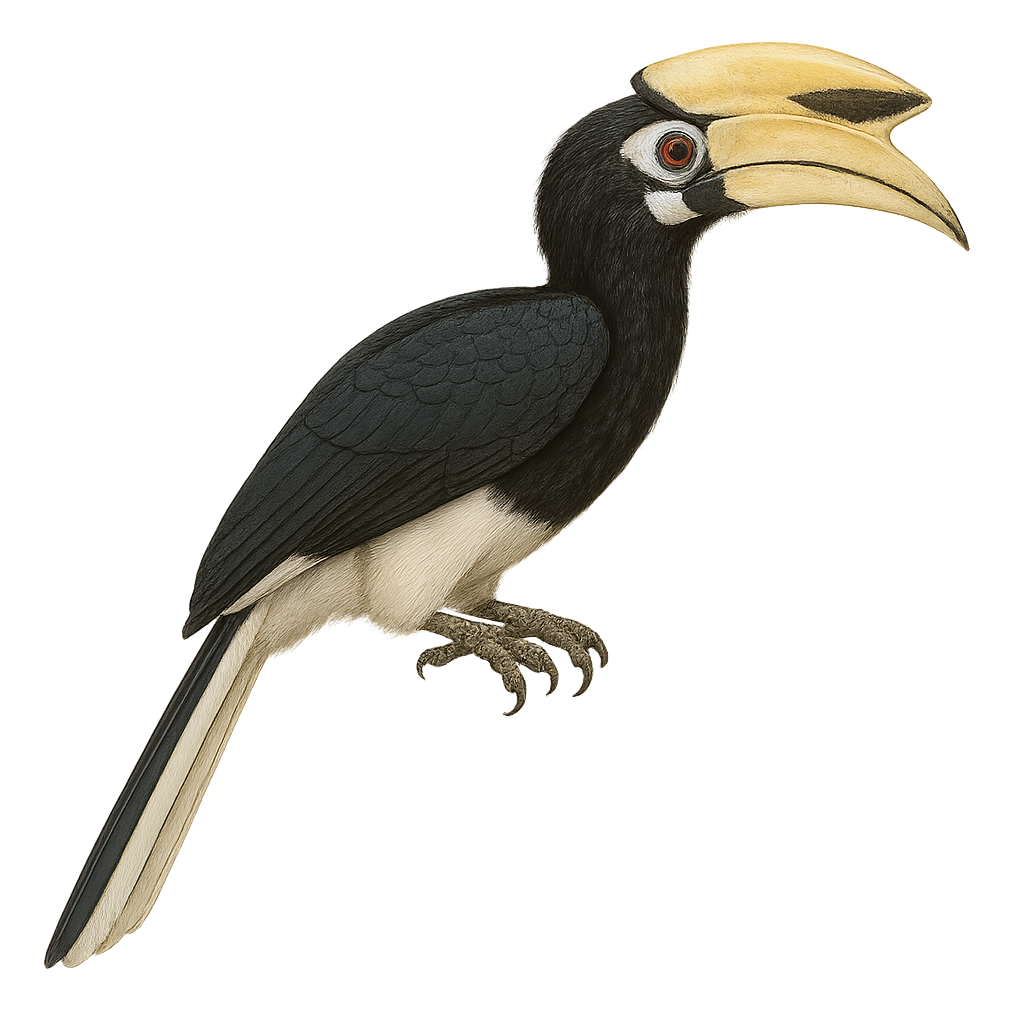Your wildlife photography guide.
Explore the oriental pied hornbill in detail, study its behavior, prepare your shots.
Where to observe and photograph the oriental pied hornbill in the wild
Learn where and when to spot the oriental pied hornbill in the wild, how to identify the species based on distinctive features, and what natural environments it inhabits. The WildlifePhotographer app offers tailored photography tips that reflect the oriental pied hornbill’s behavior, helping you capture better wildlife images. Explore the full species profile for key information including description, habitat, active periods, and approach techniques.
Oriental Pied Hornbill
Scientific name: Anthracoceros albirostris

IUCN Status: Least Concern
Family: BUCEROTIDAE
Group: Birds
Sensitivity to human approach: Suspicious
Minimum approach distance: 10 m
Courtship display: February to June
Incubation: 23-27 jours
Hatchings: February to July
Habitat:
Tropical forests, mangroves, wooded areas
Activity period :
Primarily active during the day, with peak activity in the morning and late afternoon.
Identification and description:
The Oriental Pied Hornbill, Anthracoceros albirostris, is a captivating bird native to the tropical forests of Southeast Asia. Easily identifiable by its large, white beak topped with a distinctive black casque, it measures between 60 and 90 cm. Its striking black and white plumage adds to its allure. These birds live in family groups and are known for their complex social behavior. They primarily feed on fruits but also consume insects and small animals. Their resonant calls often echo through the canopy. The Oriental Pied Hornbill plays a crucial role in seed dispersal, thus contributing to the health of forest ecosystems.
Recommended lens:
400 mm – adjust based on distance, desired framing (portrait or habitat), and approach conditions.
Photography tips:
To photograph the Oriental Pied Hornbill, it's advisable to use a telephoto lens of at least 400mm to capture detailed images from a distance. As these birds are suspicious, it's important to remain discreet and blend into the environment to avoid scaring them away. Opt for early morning or late afternoon hours to benefit from soft light and avoid harsh shadows. Be patient and wait for them to perch on an open branch to get sharp and captivating shots.
The WildlifePhotographer App is coming soon!
Be the first to explore the best nature spots, track rutting seasons, log your observations, and observe more wildlife.
Already 1 431 wildlife lovers subscribed worldwide

